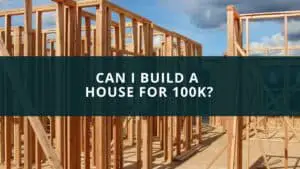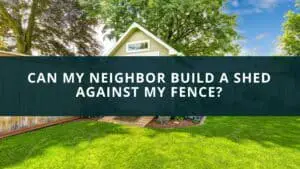Have you ever been to the United Kingdom? One of the first things you’ll notice is the size of the residential buildings. Houses here are smaller than in America or other parts of Europe, leading many to complain about the limited space. So, why are houses in the UK so small?
The average size of homes in the UK is 800 square feet, far below the over 2000 square feet in the US. This small size is due to many factors such as the limited building space, high cost of construction, greedy and profit-oriented builders, and laws and regulations that enable small-sized homes.
However, the small size of homes in the UK doesn’t influence the price as homes are still very expensive. The average cost in the UK is more than £260,000 (about $341,000). Here, we discuss the size of homes in the UK and why they’re so small.
Quick navigation
Size of Houses in the UK
There are several complaints about homes in the UK. But none is more valid than the size. Over the years, the size of homes in the country has gotten smaller than they used to be, even as the prices increase. But even before now, homes in the UK have always been small compared to America or even the rest of Europe. From the 1930s to the 1970s, the size of homes in the UK was gradually increasing. But after peaking in the 70s, it soon fell back and continued to get smaller. It has continued to drop.
In England, which has the smallest homes in the country, there are discrepancies in the usable floor areas based on ownership types. Owner-occupied homes have the highest at 358 square feet, while private renters and social renters have 243 square feet and 217 square feet for social renters. Even the biggest houses here are far smaller than the average size of a single-family home in the US. Of course, the average size of a detached house in the UK is around 800 square feet.
By comparison, the average size of a single-family home in the US in 2020 was 2,491 square feet. This is so even though the average size of homes in the US has reduced in the last five years. But when it comes to the long term, the size of homes has almost doubled in the US over the last four decades. It’s not only the houses that are small in the United Kingdom, but even the spaces between them are also small. It’s normal to find terraced houses with walls touching one another in several parts of the UK.
Factors Responsible for Small Size of Homes in the UK
Several factors could explain why a house in the UK is so small. These include:
1. Limited Building Space
The UK might be a world power, but it’s a very small country for its population. The population density in the country is quite high, with England being the most densely populated. Scotland and Wales have more rural areas and also lesser people. The population density of the United Kingdom is 281 per Kilometer square. This is far above that of the US, with 36 people per Kilometer square. The population density shows how many people compete for space within the country. The result is that the cost of land is very high. It also means that builders will seek to maximize the space by building smaller homes. The smaller homes phenomenon is most common in England, with the most cities and people in the UK compared to Wales and Scotland.
2. High Cost of Construction
The cost of construction in the United Kingdom is one of the major factors responsible for the size of homes in the country. This high cost is due to various reasons, including inflation and the complex process that builders have to go through. For contractors and building companies in the UK to get approval, they usually have to spend a lot of money. Apart from the basic construction costs, there are other fees such as bureaucracy. For example, contractors pay admin charges, council tax, land tax, solicitor fees, architect fees, purchase tax, project management costs, hidden costs, etc.
After considering all these expenses, it costs a lot more for builders to complete the house. In order to make profits regardless of the costs, many builders choose to build low-quality and poorly designed home and cram as many homes as legally possible into the space. The result is plenty of smaller homes. In recent years, homes in the UK have been getting smaller as building costs rise and builders remain focused on maximizing profits.
3. Profit-oriented Builders
Even though the cost of building homes in the country is high, the builder’s greediness also influences the size of homes in the country. As far back as 2011, the Royal Institutes of British Architects claimed that the average 3-bedroom house in the country is 8% smaller than the minimum recommended. This shows that while cost influences the decision, builders usually view the recommended minimum size of an apartment as too big and still find a way to reduce the size.
The result is tiny shoebox-size homes that are barely comfortable for family life and equally expensive. Even with old houses, most of them have been remodeled to be smaller to provide room. The fact that houses in the United Kingdom are valued based on the number of rooms rather than their floor space means that builders can have multiple rooms without increasing the floor space. In industrial cities, most of the places that are now residential buildings used to be workrooms which are generally smaller than regular bedrooms.
4. Laws and Regulations
Another factor responsible for smaller homes common in the UK is the legal framework for construction. Unlike the US, where most states have a minimum footage size of a house, the United Kingdom doesn’t have a minimum space standard for the builders to comply with. But it has other rules, some of which even encourage builders to construct smaller homes. In recent years, there have been restrictions on energy efficiency in homes. Those building large houses have to make sure they meet energy efficiency guidelines. One of the surest ways to ensure this energy efficiency is simply building a smaller home. A tight space will no doubt require less energy to be warm or cool down, depending on the season. But this approach to energy efficiency usually limits the living space.
In Conclusion
Houses in the United Kingdom are so small due to several reasons. Some of these reasons, such as the population density and limited land, are natural. But most are due to human forces and the fact that many people benefit from the smaller homes in the country.




